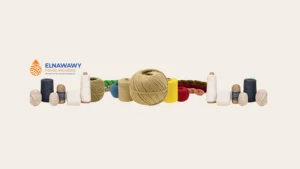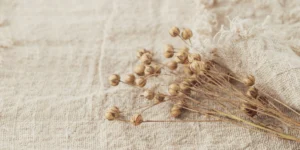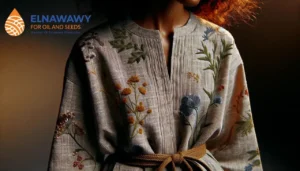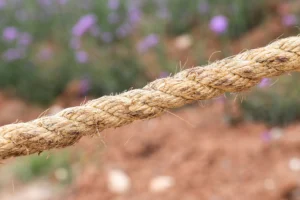Hemp rope is proof that nature is the best engineer. Associated with qualities such as strength, durability, and sustainability that are not typical for synthetic materials, it has been the “main part” of the talk.
What is it that makes it historically important? Its many uses in various areas and its characteristics that are friendly to the environment are the primary reasons.
The above-mentioned material in this article concerns the evolution, rare properties, recent practical uses, and ecosystem impacts of hemp rope in this way, it proves why it is still such a genuine and healthy option for the present and the future.
What is hemp rope made from?
Hemp rope is made from the long, stiff fibres of the Cannabis sativa plant, or industrial hemp.
- Industrial hemp is cultivated for the stalk, which contains bast fibres.
- Bast fibres are stiff, cellulose-based strands that grow between the woody core and the plant’s exterior bark.
- Bast fibre is released by a process called retting which utilizes microbe activity and water to break down the plant’s pectin and release the bast fibres.
Having been separated, the fibers are washed, combed, and spun into yarn, which is then braided or twisted to become hemp fiber rope. The twisting motion, or “laying,” is crucial—it determines the strength, flexibility, and resistance to fraying of the rope. Hemp rope is naturally light brown or beige but may be bleached or dyed for cosmetic or practical purposes.
What is so special about hemp rope is that it is grown without chemicals. Hemp grows very fast, consumes less water, and can be grown without pesticides or artificial fertilizers. This makes hemp fiber rope not only robust but also one of the most eco-friendly rope options.
Uses of Hemp Rope
The applications of hemp rope are as multifarious as its history.
Due to hemp rope’s durability when pulled, resistance to UV rays, and natural friction, it has been utilised over the centuries in nautical navigation businesses and home decor businesses.
1. Maritime and Nautical Work
Hemp rope was the best buddy of the sailor in the bygone era. Hemp was utilized for anchoring, mooring, and rigging because it was immune to seawater. Even today, some vintage sailing boats and fishing vessels use hemp instead of chemical ropes because of its nostalgic look and smooth handling.
2. Construction and Industrial Uses
In construction and heavy-duty applications, hemp rope is used in material hoisting and restraint of loads and scaffolding. It possesses excellent tensile strength such that it can be loaded with heavy weights without getting damaged and is well-suited to be used in safety-critical roles.
3. Agriculture and Farming
Hemp fiber rope is favored by farmers for piling crops, animal restraint, and equipment anchoring. Hemp rope is effective outdoors, mold-resistant, and also keeps its suppleness even when reused.
4. Outdoor Recreation
From camping and rock climbing to rope swings, hemp rope is the outdoor recreation enthusiast’s first choice. Its natural texture being secure, hemp rope is safer and more comfortable to use than many man-made ropes.
5. Home Décor and Crafting
Interior designers and crafters use hemp rope for macramé, rustic furniture trim, curtain tiebacks, and nautical crafts. The natural appearance adds warmth and character to a room.
Why Use Hemp Rope?
It’s a rope that does the job of securing a boat, injecting some living room style, or building a temporary structure.
Hemp rope will not contribute to microplastic contamination, and when it finally deteriorates, it innocently returns to the earth.
From the fields where industrial hemp is grown to the skilled hands that spin its fibres into durable lengths, each step of hemp fibre rope making is a harmony of strength, sustainability, and tradition.
It’s not rope; it’s a connection to centuries of tradition and a step towards a sustainable future.
The Historical Significance of Hemp Rope
Hemp has been used for thousands of years and it has been a part of the history of this invention since time immemorial. It is thought that one of the earliest known applications of hemp was made by the ancient people of Mesopotamia, Egypt, and China.
They realized that their fibers were the strongest and most resistant ones, so they used them to make ropes to do such important tasks as building, transport, and agriculture.
Find Out More: 12 Reasons to Choose Hemp Shoes: Stylish, Sustainable Footwear
Hemp Rope in Maritime History
During the Age of Exploration, the main material for the navy was hemp rope so it already comprised the navy. A reason for its popularity is that it’s strong in resisting saltwater and rot. Almost forever, its main position was in shipbuilding, trade routes securing, and maritime exploration.
Industrial Revolution and Decline
The industrial revolutions demonstrated once again the spin-off of the use of hemp, but with the entry of synthetic fibers into the industry in the 20th century, hemp ropes were then substituted.
However, with the increase in concern for the environment, the need for natural and biodegradable materials has caused the rebirth of hemp rope as an alternative to the nylon version.
Find Out More: Hemp vs Linen : A Sustainable Showdown in Natural Fabrics
Uncommon Properties
The distinctiveness of hemp rope is an inheritance of properties that hemp fibers naturally possess. The qualities exhibited are different from those of artificial counterparts and natural ropes generally:
- High tensile strength: it has a high tolerance for force to be applied in any direction.
- Long-lasting and resilient: maintains its integrity over time even under challenging conditions.
- Resistance to UV Light and Moisture: Hemp fibers boast natural resistance to ultraviolet light, mold, and mildew, hence perfect for the outdoors.
- Eco-Friendliness: Grown with minimal water, and requiring no pesticides, hemp is one of the most sustainable crops there is. Biodegradable, the ropes leave no dangerous waste.
- Flexibility and Texture: It is soft to the touch yet holds firm in grip; these features make it ideal for knotting, crafting, and handling.
- Thermal Insulation: The natural fibers of hemp provide insulation and are therefore applicable for specific uses in industry.
The Diverse Uses of Hemp Rope
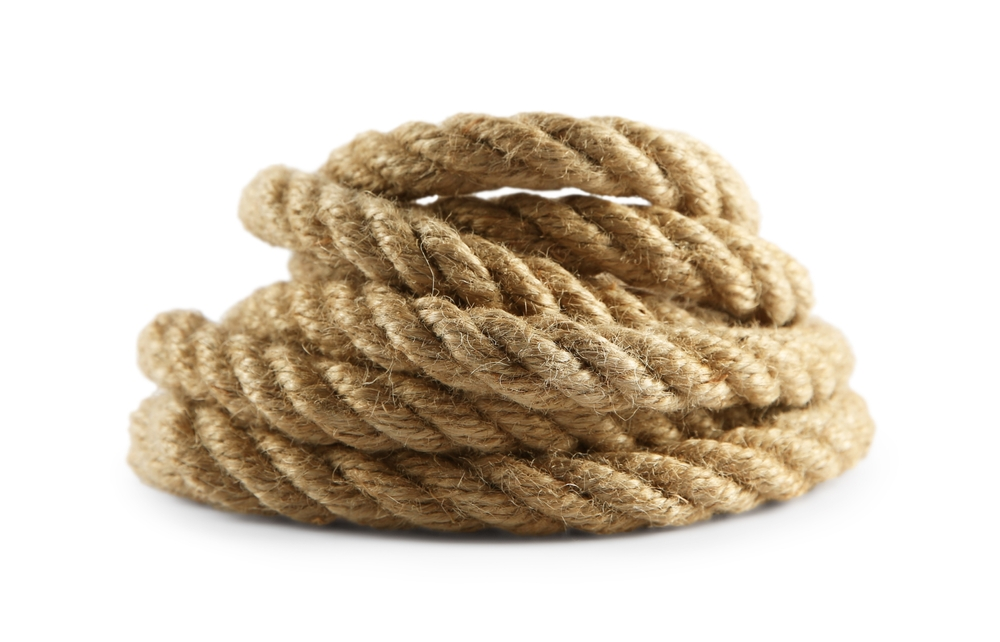
The versatility makes it valuable in many fields. Let’s look at a few of them:
1. Marine and Nautical Use
It has been a well-known product in maritime industries for many years. The resistance of the rope to saltwater and UV light makes it a reliable choice for rigging, mooring, and anchoring.
Traditional sailing vessels and fishing communities still prefer hemp rope today, as it’s reliable in harsh marine conditions.
2. Construction and Heavy-Duty Tasks
In construction, it is used to hoist and bind materials through its tensile strength.
As the material holds high tensile strength, the load can easily be borne and, with flexibility, is easily handled at busy worksites. It is utilized in scaffolding and temporary structures.
3. Agriculture and Farming
Farmers use it to hold crops in place, tether livestock, and bundle hay. It is very mold-resistant and does well in damp or outdoor applications.
4. Outdoor Recreation
Climbers, campers, and adventure-seekers love the grip and strength of it.
The ropes are great for tying up tents, building shelters, or creating rope ladders. Its biodegradable properties make it an earth-friendly product for outdoor enthusiasts.
5. Home Decor and Decoration
The rope’s rugged texture has become a favorite for decorating homes.
It has been used to create macramé pieces as well as other nautical designs, giving it a very earthy, vintage feel. It can also be applied in furniture-making, like covering chair legs or making a handmade hammock.
6. Industrial Application
it is used in industrial bindings, heavy-duty, or lifting work. It finds use in packaging and warehousing jobs and transports most safely.
The versatility makes it valuable in many fields, including maritime, construction, agriculture, and home decor. Explore high-quality hemp ropes here.
Ecological Benefits of Hemp Rope
Its popularity today is mainly based on its ecological effect. In this regard, let’s describe in what ways it would bring human civilization closer to a more eco-friendly future:
- Carbon Sequestration: The cultivation of hemp absorbs a lot more carbon dioxide than most crops, lowering levels of greenhouse gas and consequently fighting climate change.
- Minimal Resource Use: Hemp grows quicker while requiring less water, sans chemical fertilizers or pesticides.
- Biodegradable: Unlike the synthetic ropes leading to microplastic pollution, it is easily biodegradable without leaving behind any toxic residues.
- Soil Improvement: Its deep roots condition the soil, preventing erosion and enriching subsequent crops.
- Alternative to Petroleum-based Products: It is renewable and an alternative to the Eco-friendly products used by industries.
While nylon and polyester synthetic ropes dominate the market due to their cost-effectiveness and specific properties, they have a number of disadvantages, including the following:
- Environmental Damage: Synthetic ropes are made from petroleum products and thus contribute to environmental pollution and carbon emissions. Microplastics: Synthetic ropes release harmful microplastics into ecosystems as they degrade, which poses risks to wildlife and human beings.
- Grip and Safety: It offers a great grip as the surface of synthetic ropes is quite slippery most of the time.
The natural qualities make it a favorite for users who are keen on sustainability as well as reliability.
By choosing our product, you contribute to a greener future with sustainable and biodegradable materials. View our eco-friendly hemp rope collection.
Care for Hemp Rope
It lasts long if kept in good condition.
The following tips are for maintaining the strength and beauty of hemp rope:
- Storage: Keep it in a cool, dry place avoiding direct sunlight that may cause it to wear off unnecessarily.
- Cleaning: If dirty, wash with mild soap and water. Strong chemicals will weaken the fibers.
- Drying: Allow the rope to air dry completely, as this may be where mold or mildew may start to grow in the fibers.
- Inspection: The rope should be routinely inspected for fraying or weakening, especially after it has gone through strenuous tasks.
To ensure durability and performance, proper care is essential. Discover premium hemp ropes designed to last.
Innovations and the Future of Hemp Rope
The future seems bright for it, as industries are transforming towards sustainability. Innovations in the processing of hemp also enhance its strength, flexibility, and resistance against modern challenges.
For example, using hemp in renewable energy, sustainable construction, or biodegradable packaging can replace less sustainable materials.
Find Out More: Hemp Cord: 7 Powerful Reasons to Love It for Every Project
Frequently Asked Questions About Hemp Rope
Can Hemp Rope Be Used Outdoors?
Will Hemp Rope Be Able to Support My Heavy Weight?
How do I keep hemp rope?
Is hemp rope pet and child-friendly?
Can I dye hemp rope?
What makes hemp rope different from jute or sisal?
Conclusion
Hemp rope stands out as more than a functional material; it represents sustainability and resiliency. With such a rich history, marvelous properties, and environmental benefits, it is an asset to a wide range of industrial and personal uses.
By opting for hemp rope, we opt not only for a high-performing material but also for a greener, cleaner planet. Powerfully deployed in heavy industrial use, artistic ventures, or eco-sensitive living, it often proves that what comes from nature can simply outshine its synthetic alternatives.

